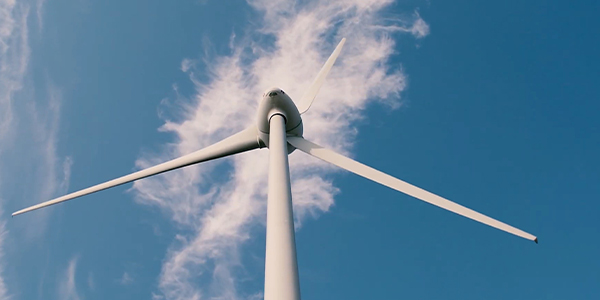Fall in the MISO footprint was a study in record wind production — in more ways than one.
The quarter was defined by unprecedented hurricane activity and peak wind generation. MISO set an all-time wind output record of nearly 19 GW on Nov. 15, when wind accounted for nearly a third of all generation.
MISO Independent Market Monitor David Patton said during the RTO’s Markets Committee meeting Tuesday that installed wind capacity and output expanded by 33% and 30%, respectively, compared to last fall. But he said the record production came with a price, as more than half of the quarter’s real-time congestion was related to wind generation.
“As our wind output grows, the transmission congestion it’s causing is significant,” Patton said.
MISO acknowledged that though wind is taking an increasing portion of the resource mix, it continues to be curtailed during high production.
Patton said “dramatic” changes in wind output occurred several times during the fall, making MISO’s forecasting vital. He said that on Oct. 18, wind generation fell from 15.5 GW to 1 GW during the day. On Oct. 16, it dropped nearly 6 GW right before the evening peak.
“If MISO doesn’t see this coming, it’s like losing six nuclear units at once,” he said.
Patton said average load was down about 7% compared to normal because of a combination of the COVID-19 pandemic and moderate fall temperatures. MISO estimated that the pandemic was tied to a 4% reduction in load this fall.
A blend of lower load, lower natural gas prices and high wind output contributed to a 14% decrease in energy prices from last fall, he said.
Pandemic-muted loads are also creeping back into the seasonal picture as infections soar and local officials again limit gatherings.
“We are moving back into COVID-19 load levels, where we are about 5% below load from a normal, non-COVID world,” MISO Director of Operations Planning J.T. Smith said.
Laura Pricing in Question
Pricing issues after Hurricane Laura made landfall in Louisiana on Aug. 27 continues to be a source of debate among staff, the Monitor and stakeholders.
Patton said the storm caused $90 million in congestion costs and “effectively created a dead zone in the Lake Charles area, destroying a significant amount of distribution system lines and transmission.” He said about $10 million of the congestion costs was from MISO pricing dead buses in the area at the $3,500/MWh value of lost load (VOLL).
He questioned the logic of pricing widespread, disconnected buses at VOLL. (See Laura Pricing Has MISO Stakeholders Scratching Heads.)
“It wasn’t an area where we were resource-inadequate. … In theory, this is not a situation that warrants VOLL pricing,” he said. “We lost a lot of key transmission lines into the area, and we lost a lot of generation.”
Patton said he is working with MISO to more appropriately price the area.
“I’m sure I’ll have more to report,” he told the Board of Directors.
MISO declared local conservative operations for a month after Laura’s landfall to support restoration efforts.
Patton said that by mid-September, three generating units in the area were again able to serve load, but total restoration was not complete until mid-October.
MISO encountered “modeling challenges” in the load pocket created by the storm, Patton said, noting the grid operator could not price conditions consistent with the aftermath until early September. During that time, prices during peak conditions only averaged about $20/MWh, even though industrial load was still going unserved, he said.
“For about a week after Hurricane Laura, the prices in the area should have been fairly high but they were inefficiently low,” Patton said. The RTO eventually established a reserve procurement constraint Sept. 8, but Patton said that by then, the tightest conditions had already passed.
MISO President Clair Moeller said it took about two to three days for the RTO’s operators to manually readjust reserve zones to get more accurate pricing following the storm. He said MISO’s pricing must be more automated and dynamic in the future.






